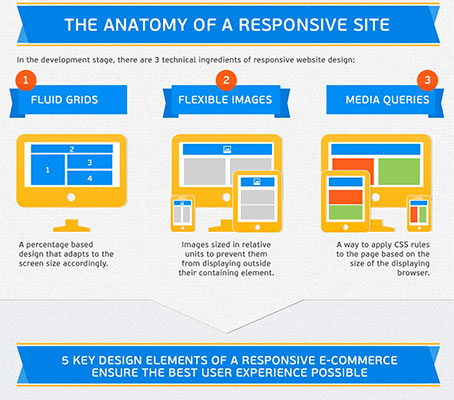Have you ever before visited a site that took forever to lots, had a confusing navigation system, or didn't present appropriately on your smart phone? Chances are, you promptly abandoned that site and carried on to one that offered a far better user experience.
In today's affordable on-line landscape, it's crucial for services to focus on web design that enhances customer experience in order to drive much better conversions. In this discussion, we will discover the value of responsive design, the application of intuitive navigation, and the optimization of page tons rate to develop a seamless and engaging individual trip.
Remain tuned to uncover just how these elements can considerably impact your web site's success.
Relevance of Responsive Design
Receptive style is crucial in today's electronic landscape for developing sites that adapt perfectly to various display dimensions and devices. When your site is receptive, it instantly adjusts its layout and material to fit any kind of tool, whether it's a smartphone, tablet, or desktop computer. This is crucial since a growing number of individuals are accessing the web through their mobile devices.
If your website isn't responsive, it can bring about an inadequate individual experience. Users may need to pinch and zoom to review content, switches may be as well small to click, and photos may not be optimized for smaller screens. This can discourage customers and cause high bounce prices and low conversions.
Using Intuitive Navigation
When developing a responsive website, it is essential to concentrate on utilizing instinctive navigating for an improved customer experience.
Instinctive navigating describes arranging your website's menu and navigation aspects in a logical and user-friendly method. By doing so, you make it less complicated for site visitors to find what they're searching for and navigate via your site effortlessly.
User-friendly navigating helps reduce complication and aggravation, inevitably bring about far better user interaction and increased conversions.
To achieve instinctive navigation, think about utilizing clear and detailed tags for your menu items, implementing a consistent design across all pages, and including search performance for quick access to details web content. Additionally, visit the next website to prioritize vital web pages and information, ensuring they're plainly shown and quickly available.
Optimizing Page Tons Rate
To improve user experience, it's vital to optimize the page tons rate of your web site. Slow-moving filling times can frustrate customers and bring about higher bounce rates.
Thankfully, there are a number of methods you can apply to improve your web site's tons rate. First of search engine positioning seo , think about minimizing the dimension of your photos by compressing them without endangering quality.
Additionally, maximize your code by lowering unneeded scripts and CSS files. One more efficient method is to take advantage of web browser caching, which enables specific aspects of your web site to be saved in your area, decreasing load times for returning site visitors.
Moreover, take into consideration using a material delivery network (CDN) to disperse your website's data throughout multiple servers, enhancing load rate for individuals in different geographical locations.
Final thought
In conclusion, by utilizing responsive style, intuitive navigating, and enhancing page lots speed, website design can dramatically improve individual experience and drive much better conversions.
With an user-friendly user interface, easy navigation, and fast packing times, websites can capture and maintain the focus of individuals, bring about enhanced engagement and greater conversion rates.
So, do not delay in implementing these website design techniques to ensure a seamless and successful individual experience!
